I have a target object and a lot of other objects in an image. Target object is pre-defined with a known shape in advance as shown in figure.

My task is to detect all the target object present in the image and find the angle at which the detected object is oriented with respect to target object. For the object detection purpose I am using YOLO-V5-OBB model which gives me detection confidence and the rotated bounding box coordinates.See the result below
I would like to know how rotation angle is predicted by yolo-obb model in order to make rotated bounding boxes around the detected objects?
